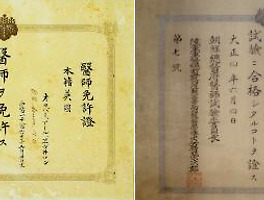
spino-thalamic tract
dorsal column
Upper motor neurons travel in several pathways through the CNS:
| Tract | Pathway | Function |
| corticospinal tract | from the motor cortex to lower motor neurons in the ventral horn of the spinal cord | The major function of this pathway is fine voluntary motor control of the limbs. The pathway also controls voluntary body posture adjustments. |
| corticobulbar tract | from the motor cortex to several nuclei in the pons and medulla oblongata | Involved in control of facial and jaw musculature, swallowing and tongue movements. |
| tectospinal tract/colliculospinal tract | from the superior colliculus to lower motor neurons | Involved in involuntary adjustment of head position in response to visual information. |
| rubrospinal tract | from red nucleus to lower motor neurons | Involved in involuntary adjustment of arm position in response to balance information; support of the body. |
| vestibulospinal tract | from vestibular nuclei, which processes stimuli from semicircular canals | It is responsible for adjusting posture to maintain balance. |
| reticulospinal tract | from reticular formation | Regulates various involuntary motor activities and assists in balance. |
Upper motor neuron lesions are indicated by spasticity, muscle weakness, exaggerated reflexes, clonus, and an out toeing (flaring) of toes and extensor plantar response known as the Babinski sign.
Corticospinal tract


Lower motor neurons
In the spinal cord, the axons of the upper motor neuron connect (most of them via interneurons, but to a lesser extent also via direct synapses) with the lower motor neurons, located in the ventral horn of the spinal cord.
In the brain stem, the lower motor neurons are located in the motor cranial nerve nuclei (oculomotor, trochlear, motor nucleus of the trigeminal nerve, abducens, facial, accessory, hypoglossal). The lower motor neuron axons leave the brain stem via motor cranial nerves and the spinal cord via anterior roots of the spinal nerves respectively, end-up at the neuromuscular plate and provide motor innervation for voluntary muscles.
Sensory pathways
The spinothalamic tract is a sensory pathway originating in the spinal cord. It transmits information to the thalamus about pain, temperature, itch and crude touch. The pathway decussates at the level of the spinal cord, rather than in the brainstem like the posterior column-medial lemniscus pathway and corticospinal tract.
The cell bodies of neurons that make up the spinothalamic tract are located principally within the dorsal horn of the spinal cord. These neurons receive input from sensory fibers that innervate the skin and internal organs.
Unilateral lesion usually causes contralateral anaesthesia (loss of pain and temperature). Anaesthesia will normally begin 1-2 segments below the level of lesion, affecting all caudal body areas. This is clinically tested by using pin pricks.

'Private > SSY' 카테고리의 다른 글
| [2] 왜 JPEG를 사용할까? (1) | 2011.05.26 |
|---|---|
| [1] JPEG란 무엇인가? (0) | 2011.05.26 |
| Antibiotics (0) | 2009.10.11 |
| 우리나라 의사 면허 (0) | 2009.08.15 |
| Cerebrovascular Diseases (0) | 2009.06.09 |
